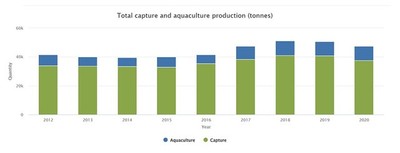
Aquaculture production in Sudan
Editor/Mohamed Shihab
Dr. Ekaitz Maguregui
Currently, most of the fish consumed in Sudan comes from traditional and extensive fishing along the Nile River.In the Republic of Sudan, a North African country with more than 45.5 million inhabitants, aquaculture is currently a diamond in the rough yet to be exploited, due to the geographical conditions and the vast aquatic resources that the country has.
Sudan has a large aquatic area, both fresh and saltwater, since, through this North African country, runs most of the Nile, the second longest river in the world with more than 6,600 km, along with a large number of artificial lakes created from the Nile such as Lake Gebel Aulia, the Roseires or Lake Nubia among others.
At the same time, Sudan is bathed by the Red Sea, with more than 853 km of coastline, providing great possibilities for the settlement of marine aquaculture.
Currently, most of the fish consumed in Sudan comes from traditional and extensive fishing along the Nile River. Both freshwater and marine capture fisheries have remained stable over the last few years, at around 30,000 – 40,000 tonnes per year.
On the other hand, aquaculture although it began to develop in 1953, through the breeding of Nile tilapia (Oreochromis niloticus) in ponds in an extensive and semi-extensive way, as well as the culture of different species of carp to prevent the overgrowth of algae and aquatic plants that could clog the irrigation channels for agriculture, it has not been until this last decade where the development of the aquaculture has begun to industrialize and develop significantly, going from 6,500 tons produced in 2013 to 9. 850 tons produced in 2020.
The main species currently produced by aquaculture are Nile tilapia and different species of catfish (Clarias spp.). The cultivation of both species is becoming increasingly technical and intensified. In the case of tilapia, the first breeding farms capable of supplying fry to commercial farms have been established, which are gradually increasing in size.
These breeding farms are introducing more developed farming techniques, such as the production of monosex tilapia, which implies that all the fry obtained are phenotypically male. This technique is widely known and allows to avoid unwanted reproduction in fattening ponds, as well as a higher productive yield, since males have a higher growth than females.
The production of monosex tilapia is carried out by sexual reversion of genetic females to phenotypic males, through the administration of different androgens in the feed during the initial stage of development of the fry.
This is a clear example of how aquaculture in Sudan is being industrialized and technified, and this development is expected to continue progressively in the coming years, due to the great aquatic resources of the country.


ساحة النقاش